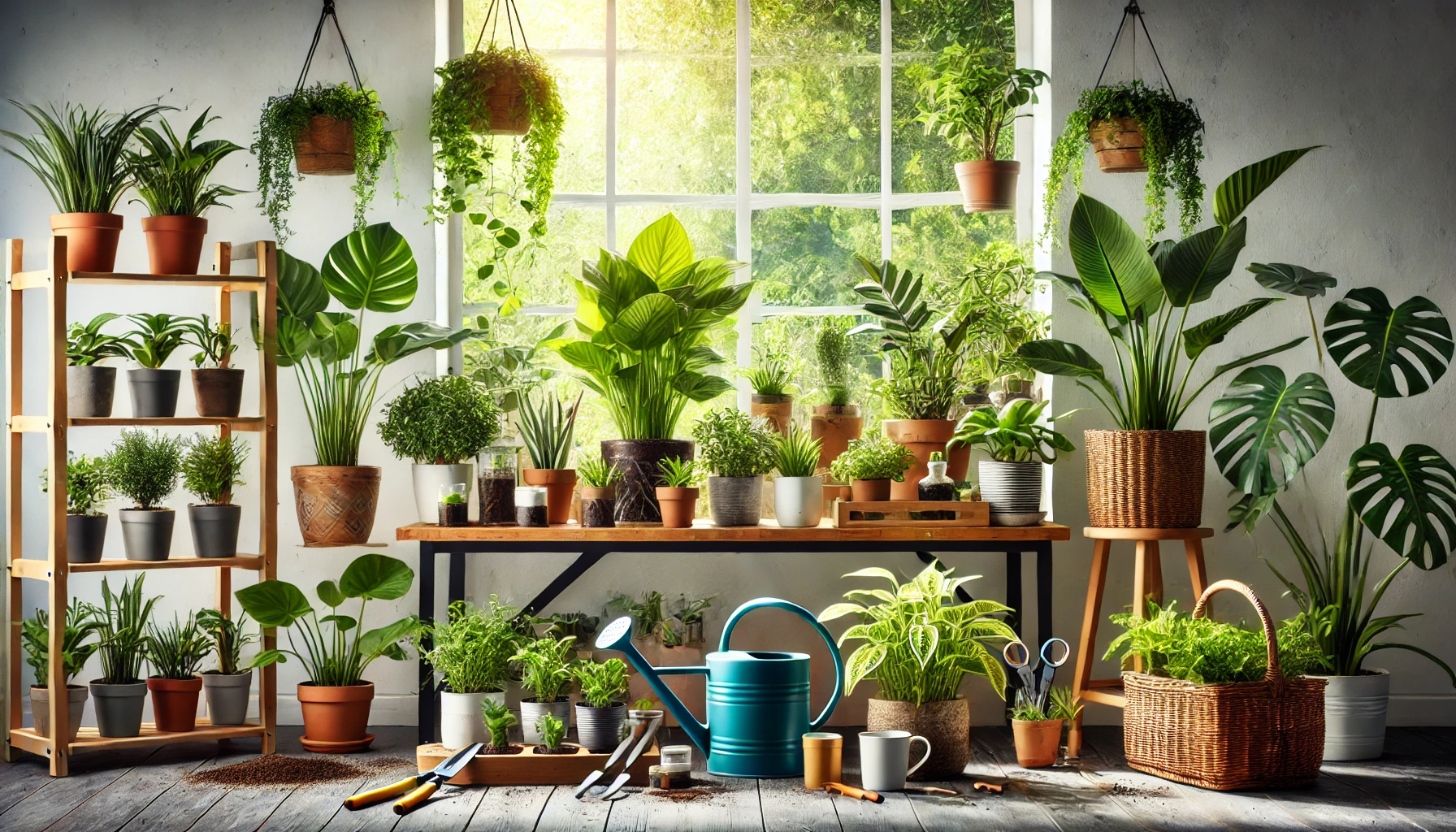Helping your plants grow faster doesn’t have to involve expensive fertilizers or complex techniques. With a few simple adjustments to your care routine, you can encourage healthy and speedy growth in your indoor and outdoor plants. In this article, we’ll explore practical tips that are easy to implement and highly effective for boosting plant growth.
Ensure Proper Light Exposure
Light is one of the most critical factors for plant growth, as it fuels photosynthesis. Make sure your plants are getting the right amount of light based on their species. While sun-loving plants like succulents and cacti need bright, direct light, others like ferns and pothos thrive in indirect or low light. If natural light is limited, consider using grow lights to supplement their needs. Rotate your plants every few weeks to ensure even exposure on all sides, preventing uneven growth.
Water Correctly and Consistently
Plants need water to transport nutrients and maintain cell structure, but overwatering or underwatering can hinder growth. Check the soil regularly and water only when the top inch feels dry. Use room-temperature water to avoid shocking the roots. Ensure the pot has proper drainage to prevent waterlogging, which can lead to root rot. For outdoor plants, water early in the morning or late in the afternoon to minimize evaporation.
Use Nutrient-Rich Soil
Healthy soil is the foundation of a thriving plant. Choose a well-draining potting mix suitable for the type of plant you’re growing. You can enrich the soil with organic matter such as compost, which adds essential nutrients and improves soil structure. Regularly replacing or refreshing the top layer of soil in potted plants ensures they continue to receive adequate nutrients over time.
Feed Your Plants with Fertilizers
To encourage faster growth, supplement your plants with a balanced fertilizer. Use fertilizers with a mix of nitrogen, phosphorus, and potassium, as each plays a vital role in growth. Nitrogen promotes leafy growth, phosphorus aids in root and flower development, and potassium improves overall health. Follow the recommended dosage to avoid over-fertilizing, which can damage the roots.
Prune and Remove Dead Leaves
Pruning helps direct the plant’s energy toward new growth by removing dead or yellowing leaves and unnecessary stems. Use clean, sharp scissors or pruning shears to avoid spreading diseases. Regular pruning not only stimulates growth but also improves the plant’s appearance.
Maintain Optimal Temperature and Humidity
Most plants grow best in temperatures between 65°F and 75°F (18°C to 24°C). Avoid placing plants near air conditioners, heaters, or drafty windows, as sudden temperature changes can stress them. For tropical plants, maintain a higher humidity level by misting the leaves or using a humidifier.
Repot When Necessary
If your plant’s roots are overcrowded, growth can slow significantly. Repot your plant into a slightly larger pot when you notice roots growing out of the drainage holes or circling around the pot. Use fresh soil during repotting to give the plant a nutrient boost.
Provide Support for Climbing Plants
Climbing plants like philodendrons and ivy grow faster when they have something to cling to. Use trellises, poles, or moss sticks to guide their growth upward, helping them reach their full potential.
Keep Pests at Bay
Pests such as aphids, spider mites, and whiteflies can stunt growth by feeding on plant sap. Inspect your plants regularly for signs of infestation, like sticky residue or damaged leaves. Use natural pest control methods like neem oil or insecticidal soap to protect your plants.
Rotate and Rearrange Plants
Plants tend to grow toward the light, leading to uneven growth if left in the same position for too long. Rotating your plants weekly ensures they grow symmetrically and remain well-balanced. For outdoor plants, changing their position slightly can expose them to optimal sunlight throughout the day.
Encourage Root Growth with Proper Care
Strong roots are essential for healthy, fast-growing plants. Avoid disturbing the roots unnecessarily and ensure they have plenty of space to spread. Adding root boosters or mycorrhizal fungi to the soil can enhance root development and nutrient absorption.
With these simple tips, you can create an environment where your plants thrive and grow faster. Consistency is key, so develop a care routine that meets your plant’s specific needs. Healthy, vibrant plants not only grow quickly but also add beauty and vitality to your home or garden.
